Top Mobile App Development Tools for 2025
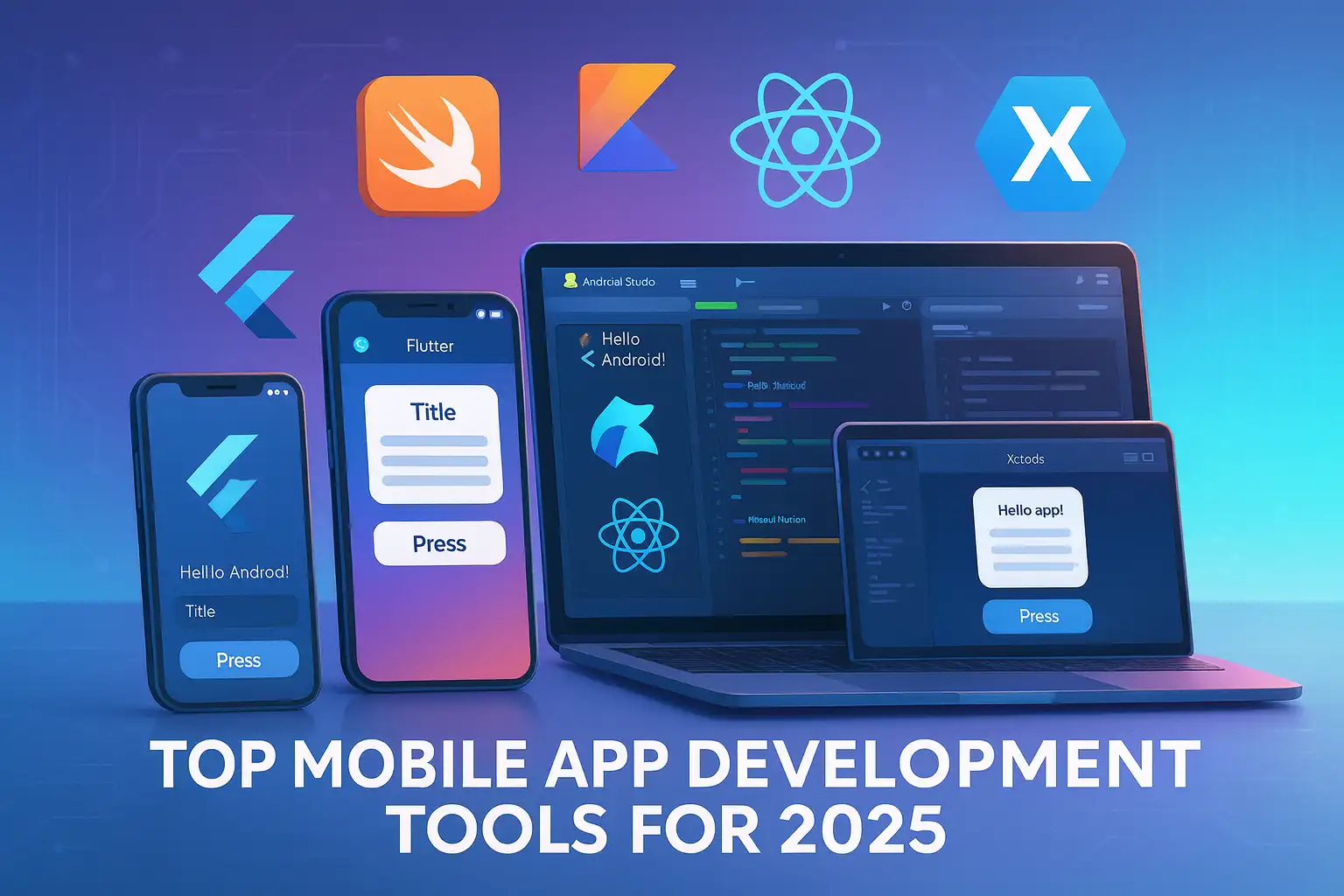
Struggling to Come Up With Game Development Ideas?
Are you an aspiring app developer, startup founder, or business leader overwhelmed by the dizzying array of mobile app development tools? Do you struggle with questions about performance, cost, learning curves, or future-proofing your investment? You’re not alone.
The mobile app landscape is evolving faster than ever, much like the future of web development. New frameworks, no-code platforms, and AI-powered solutions are redefining how apps are built. Picking the right tool today is no longer just about coding—it’s a strategic decision that affects your app’s speed, scalability, maintenance cost, and long-term success.
In this guide, Logisol Technologies brings you a clear roadmap to the top 10 mobile app development tools for 2025. Whether you want the best AI tools for mobile app development, need a cross-platform framework, or seek top no-code tools for rapid app creation, this blog will help you choose the perfect development stack for your unique project.
With our insights, you’ll discover how to:
Build apps faster without compromising performance
Integrate AI capabilities for smarter, future-ready mobile experiences
Pick tools that are cost-effective and scalable for your business
Ready to turn your mobile app idea into a powerful reality? Partner with Logisol Technologies and let our experts help you build apps with the top mobile app development tools 2025—fast, efficient, and future-proof, alongside our digital marketing services.
Understanding Different Types of Mobile App Development Tools
Choosing the right development tool can make or break your mobile app project. With so many options available, it’s crucial to understand the core categories of mobile app development tools and know exactly when to use each. This clarity will help you make smarter, future-proof choices and avoid costly mistakes.
1. Native Development (iOS/Android)
Definition: Native app development involves building applications for a specific operating system (iOS or Android) using platform-specific languages and SDKs, like Swift for iOS and Kotlin for Android.
Key Characteristics:
Maximum performance and smooth user experience
Full access to device hardware and OS features
Platform-specific UI/UX tailored for each ecosystem
Higher cost and longer timeline due to separate codebases
Ideal Use Cases:
High-performance apps like gaming or AR/VR applications
Apps requiring deep hardware integration (e.g., camera, GPS, sensors)
Highly customized apps where performance is critical
Expert Tip: Prioritize native development when building graphically intensive, hardware-driven, or highly customized apps that demand superior performance.
2. Cross-Platform Frameworks
Definition: Cross-platform development allows you to write one codebase that runs on both iOS and Android.
Key Characteristics:
Faster development and code reusability
Broader reach across multiple platforms
Slight performance trade-offs versus fully native apps
Ideal Use Cases:
MVPs or early-stage startup projects
Business or eCommerce applications
Projects with budget and time constraints
Expert Tip: Frameworks like Flutter and React Native are the top mobile app development tools 2025 for delivering high-quality apps faster while maintaining cost efficiency.
3. Hybrid App Development
Definition: Hybrid apps use web technologies (HTML, CSS, JavaScript) inside a native wrapper, allowing web content to act like a mobile app.
Key Characteristics:
Easy for web developers to transition
Rapid deployment with minimal cost
Performance depends on the device’s web view
Ideal Use Cases:
Content-driven applications or simple utilities
Apps primarily showcasing web-based content
4. No-Code/Low-Code Platforms
Definition: These platforms provide drag-and-drop interfaces to build apps with minimal coding.
Key Characteristics:
Extremely fast development
Cost-effective and accessible to non-developers
Limited customization compared to full coding
Ideal Use Cases:
Rapid prototyping and internal business tools
Simple apps or proof-of-concept projects
Expert Tip: Leverage top no-code tools for mobile app development to launch fast and test ideas before investing in a full-scale coded app.
Bridging the Gap: No-code solutions can accelerate early launches and later integrate into traditional development workflows, saving both time and budget.
5. Specialized AI Integration Tools and Libraries
Definition: These are AI and ML-focused frameworks that bring intelligent features like image recognition, NLP, and predictive analytics to your apps.
Key Characteristics:
Enables smart features like chatbots, AR experiences, and recommendations
Optimized for on-device performance
Requires some understanding of AI/ML for full potential
Ideal Use Cases:
Personalized content delivery
AR/VR features and intelligent search
Apps needing real-time recommendations or AI chatbots
Expert Tip: Use TensorFlow Lite, Core ML, or ML Kit—the top AI tools for mobile app development—to add smart capabilities without building models from scratch.
Want expert guidance in choosing the right development tools for your next mobile app? Contact Logisol Technologies to leverage top mobile app development tools 2025 and create apps that are fast, smart, and scalable.
Key Considerations for Choosing the Right Mobile App Development Tool
Selecting the best mobile app development tool is more than a technical decision—it’s a strategic business choice that impacts cost, speed, user experience, and long-term scalability. At Logisol Technologies, we guide developers, startups, and SMBs through the critical factors that determine which tool or framework will drive the highest ROI for your app, including our custom web development services.
1. Performance Requirements
Native vs. Cross-Platform Speed: Native apps deliver smooth UI, faster execution, and optimal performance, while cross-platform tools like Flutter or React Native provide good speed with some trade-offs in complex or graphics-heavy apps.
User Experience Impact: A sluggish app leads to user drop-offs. Performance directly affects retention and ratings, making it a crucial factor in your choice of development tools.
Differentiation Opportunity – Performance Benchmarking: In real-world tests, native apps often outperform cross-platform solutions for high-performance apps, like AR/VR or gaming. Cross-platform is typically sufficient for business apps and MVPs.
2. Development Cost and Budget
Initial vs. Long-Term Costs: While some tools offer faster, cheaper builds, ongoing maintenance, bug fixing, and scaling costs must also be considered.
Developer Availability & Rates: Choosing a rare or niche tool can increase hiring costs, making it crucial to hire mobile app developers efficiently. Popular frameworks often have larger, more affordable talent pools.
Licensing Fees: Some advanced tools or enterprise SDKs may come with recurring fees.
Differentiation Opportunity – Cost & ROI Breakdown: Tools that shorten development cycles and enable cross-platform delivery often lead to better ROI, especially for startups or SMBs aiming for rapid market entry.
3. Learning Curve and Team Skill Set
Existing Expertise: Match the tool to what your team already knows.
Time to Master: Avoid tools that require months of training if your project is time-sensitive.
Expert Tip: Don’t over-engineer your stack. Pick tools that align with your team’s skills and project scale to save time and resources.
4. Community Support and Ecosystem
A vibrant developer community can be a lifesaver for troubleshooting, updates, and ongoing innovation.
Key Factors:
Strong Documentation & Tutorials → Faster onboarding
Third-Party Plugins & Integrations → Extended functionality
Active Forums & GitHub Projects → Faster problem-solving
Differentiation Opportunity – Ecosystem Scorecard: Tools with strong ecosystems like React Native, Flutter, or TensorFlow Lite reduce risks and enhance long-term maintainability.
Expert Tip: Always evaluate community size, release frequency, and plugin availability before committing to a tool.
5. Target Operating Systems (iOS, Android, or Both)
If your audience is platform-specific, consider native development.
For dual-platform launches, cross-platform or hybrid frameworks can cut time and cost significantly.
6. Scalability and Future-Proofing
Your app should handle growing users, new features, and emerging tech.
Best Practice:
Update SDKs and dependencies regularly
Choose tools with active development and long-term roadmap support
7. Integration Capabilities
Your app must seamlessly connect with:
Backend Services → Firebase, AWS Amplify, custom APIs
CI/CD Pipelines → For testing and fast deployments
Analytics Tools → For data-driven improvements
Expert Tip: Cloud-based solutions like Firebase or AWS Amplify streamline backend integration, analytics, and user authentication for faster go-to-market launches.
Confused about which development tool will give your app the best performance and ROI? Schedule a Free Consultation with Logisol Technologies to choose the top mobile app development tools 2025 that will save cost, speed up delivery, and future-proof your mobile app, including our SEO services.
Top Native Mobile App Development Tools
When maximum performance, smooth animations, and deep hardware access are critical, native app development is your best choice. Native tools allow you to build apps that are fully optimized for one platform, giving you the best speed, responsiveness, and user experience.
Below is an in-depth look at one of the top mobile app development tools 2025 for native iOS development.
Swift/Xcode (Native iOS Development)
Overview: Swift is Apple’s modern programming language, and Xcode is the official integrated development environment (IDE) for building apps across the Apple ecosystem, including iOS, iPadOS, macOS, watchOS, and tvOS. Together, they provide a powerful, future-ready toolkit for developing high-performance and premium iOS apps.
Strengths:
Unparalleled performance and responsiveness for demanding apps and games
Full access to all iOS features and APIs including Face ID, Siri, and ARKit
Seamless integration with Apple’s ecosystem, ensuring your app leverages every device capability
Superior UI/UX capabilities using SwiftUI for declarative design or UIKit for traditional layouts
Weaknesses:
iOS-only (not compatible with Android)
Requires macOS and Xcode, limiting cross-platform flexibility
Steeper learning curve for developers new to Apple’s environment
Ideal Use Cases:
High-performance mobile games that require smooth animations and 3D rendering
Sophisticated enterprise apps where security and performance are non-negotiable
Premium user experiences leveraging advanced Apple features like ARKit, CoreML, or Face ID
Key Features:
Swift Language: Safe, fast, and modern programming with fewer bugs
Xcode IDE: Integrated debugging, interface builder, and testing tools
SwiftUI: Declarative UI framework for faster and cleaner design
Extensive Apple Frameworks: Access to Core Data, ARKit, CoreML, and Metal for advanced capabilities
Why It Matters in 2025: For businesses and developers targeting Apple users, Swift and Xcode remain the gold standard for native iOS app development, ensuring apps are fast, secure, and future-proof.
Planning to build a high-performance iOS app? Work with Logisol Technologies and leverage Swift/Xcode, one of the top mobile app development tools 2025, to create premium, scalable iOS apps that delight users and dominate the App Store.
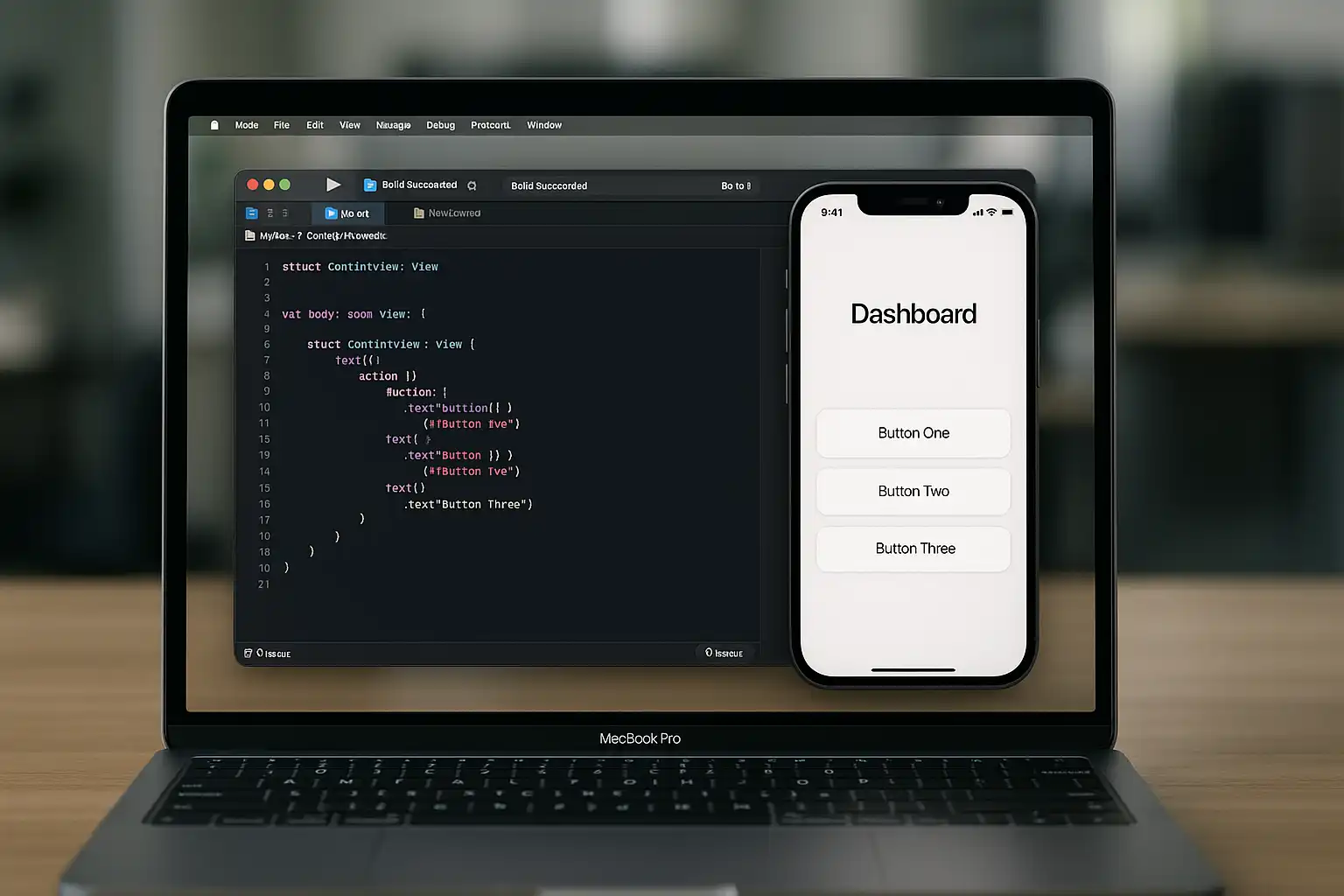
Kotlin/Android Studio (Native Android Development)
Overview: When it comes to native Android app development, Kotlin combined with Android Studio is Google’s official and most powerful toolkit. Kotlin is a modern, concise, and safe programming language, while Android Studio provides the complete development environment for creating robust and feature-rich Android applications.
Strengths:
Optimal performance and stability across Android devices
Full access to Android APIs and hardware features, including camera, GPS, sensors, and biometrics
Rich ecosystem with strong Google support, ensuring continuous updates and long-term viability
Seamless Java interoperability, making it easy to migrate or enhance existing projects
Weaknesses:
Android-only, with no built-in iOS support
Longer development cycle for businesses that need both iOS and Android apps, compared to cross-platform solutions
Ideal Use Cases:
Apps needing deep Android OS integration, like system utilities or device-specific tools
High-performance multimedia apps and streaming applications
Complex enterprise solutions with custom workflows
Apps targeting specific Android hardware features, such as NFC payments, biometrics, or IoT integrations
Key Features:
Kotlin Language: Concise, safe, and expressive for faster development with fewer bugs
Android Studio IDE: Powerful layout editor, profilers, and emulators for efficient testing and debugging
Jetpack Compose: Modern declarative UI toolkit for building clean and dynamic Android interfaces
Google Play Services Integration: Built-in tools for authentication, location, analytics, and cloud messaging
Why It Matters in 2025: With Android dominating global market share, Kotlin with Android Studio remains one of the top mobile app development tools 2025, empowering businesses to create stable, high-performing apps optimized for a wide range of devices and hardware capabilities.
Want to launch a powerful Android app that performs flawlessly on every device? Build with Logisol Technologies using Kotlin and Android Studio—the top tools for mobile app development—and get an app that’s fast, reliable, and future-ready for the Google Play Store.
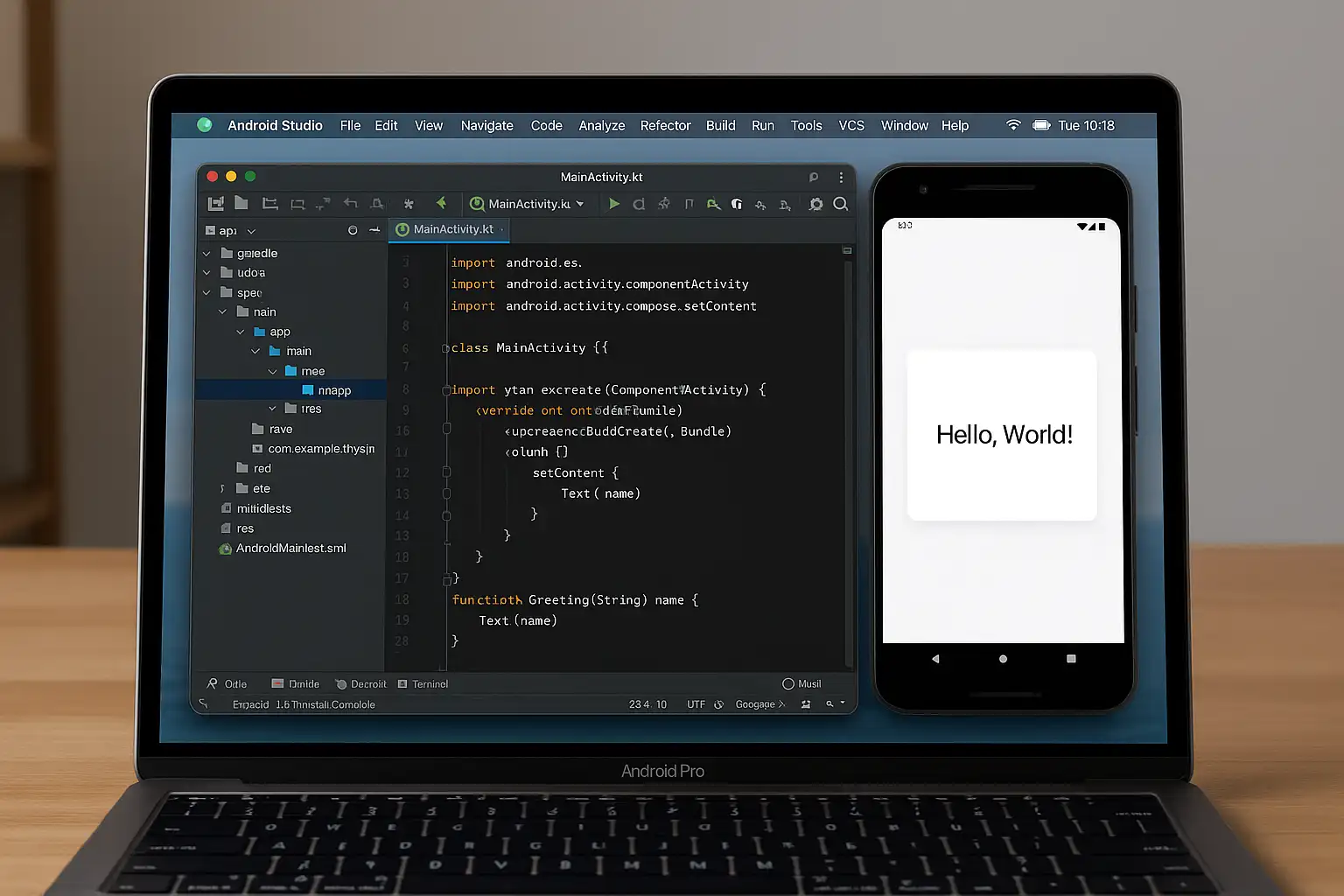
Top Cross-Platform Mobile App Development Frameworks
If your goal is to build once and launch everywhere, cross-platform frameworks are your fastest route to market. These tools allow developers to reuse a single codebase for iOS, Android, and sometimes even web and desktop—cutting time, cost, and maintenance overhead.
Among the top tools for mobile app development 2025, Flutter has emerged as a favorite for startups, MVPs, and visually rich apps.
Flutter (Google’s Cross-Platform Framework)
Overview: Flutter is Google’s powerful UI toolkit for building natively compiled mobile, web, and desktop apps from a single codebase. It combines fast development with stunning visuals, making it one of the top mobile app development tools 2025 for startups and businesses aiming for speed and quality.
Strengths:
Excellent performance thanks to native compilation
Hot Reload feature for instant code updates during development
Beautiful, customizable UI widgets (Material Design & Cupertino) for consistent branding
Strong Google support and a rapidly growing developer community
Weaknesses:
Uses Dart language, which may be unfamiliar to some developers
Slightly larger app sizes compared to fully native apps
Some niche libraries are still catching up in maturity
Ideal Use Cases:
Visually rich apps with highly customized designs
MVPs and startup apps that need fast go-to-market delivery
Apps needing consistent look and feel across iOS and Android
Projects prioritizing speed and expressive UIs over ultra-native optimizations
Key Features:
Dart Programming Language → Fast, modern, and optimized for Flutter
Extensive Widget Catalog → Build dynamic UIs with Material and Cupertino libraries
Platform-Agnostic Rendering Engine → Ensures smooth performance on both platforms
Firebase Integration → Seamless backend, analytics, and cloud services support
Why It Matters in 2025: Flutter combines fast development with stunning visuals, making it one of the top mobile app development tools 2025 for startups and businesses aiming for speed and quality, which we enhance with our graphics designing services.
Want to launch a stunning cross-platform app quickly and cost-effectively? Partner with Logisol Technologies to build with Flutter, one of the top mobile app development tools 2025, and deliver apps that work beautifully across iOS and Android.
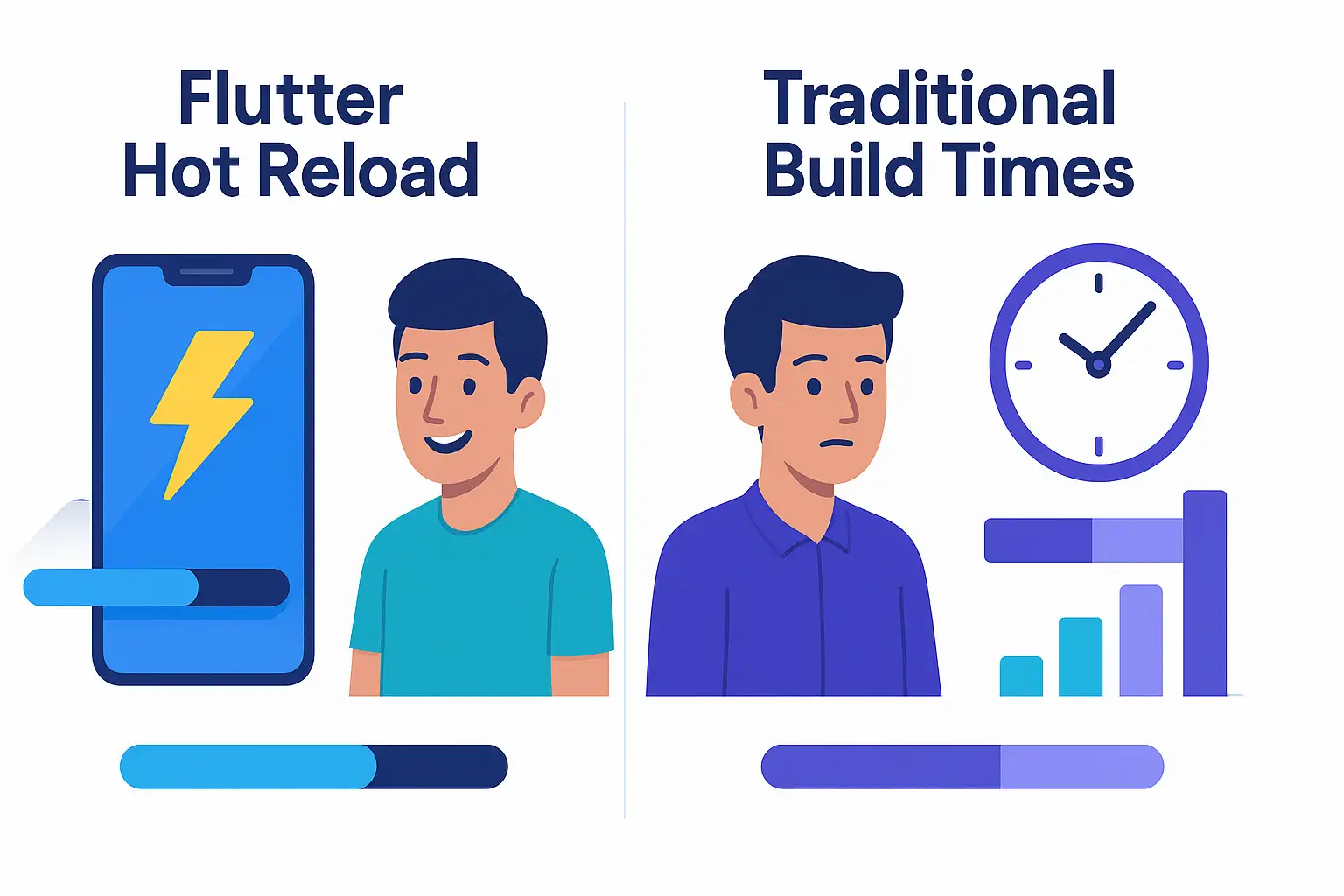
React Native (Meta’s Cross-Platform Framework)
Overview: React Native, developed by Facebook (Meta), is a JavaScript-based framework that allows you to build native mobile apps for iOS and Android using familiar web development skills. Its component-driven architecture and native module integration make it one of the top tools for mobile app development in 2025, especially for content-driven and social applications.
Strengths:
Uses JavaScript, a language familiar to millions of developers worldwide
Extensive third-party libraries and large community support for faster problem-solving
Hot Reloading for rapid iteration and faster updates during development
Ideal for social media, e-commerce, and content-driven apps where speed to market matters
Weaknesses:
Performance can lag in apps with complex animations or heavy calculations
Relies on a JavaScript bridge, which can cause minor performance overhead
Debugging can be more complex than purely native solutions
Ideal Use Cases:
Social media apps or apps with dynamic content feeds, which can benefit from our social media marketing services.
E-commerce platforms that need multi-platform reach quickly
News and content apps requiring frequent updates
Teams with web development expertise transitioning into mobile
Key Features:
JavaScript & TypeScript Support → Easy adoption for web developers
Component-Based Architecture → Modular, maintainable code for scalability
Native Module Integration → Access camera, location, and other device APIs
Expo Support → Simplifies prototyping, testing, and deployment
Why It Matters in 2025: With its mature ecosystem and huge developer community, React Native remains one of the top mobile app development tools 2025 for businesses wanting cross-platform apps that balance speed, cost-efficiency, and near-native performance.
Want to launch a cost-effective mobile app that works flawlessly on both iOS and Android? Partner with Logisol Technologies to build with React Native, one of the top mobile app development tools 2025, and deliver apps faster, smarter, and at scale.
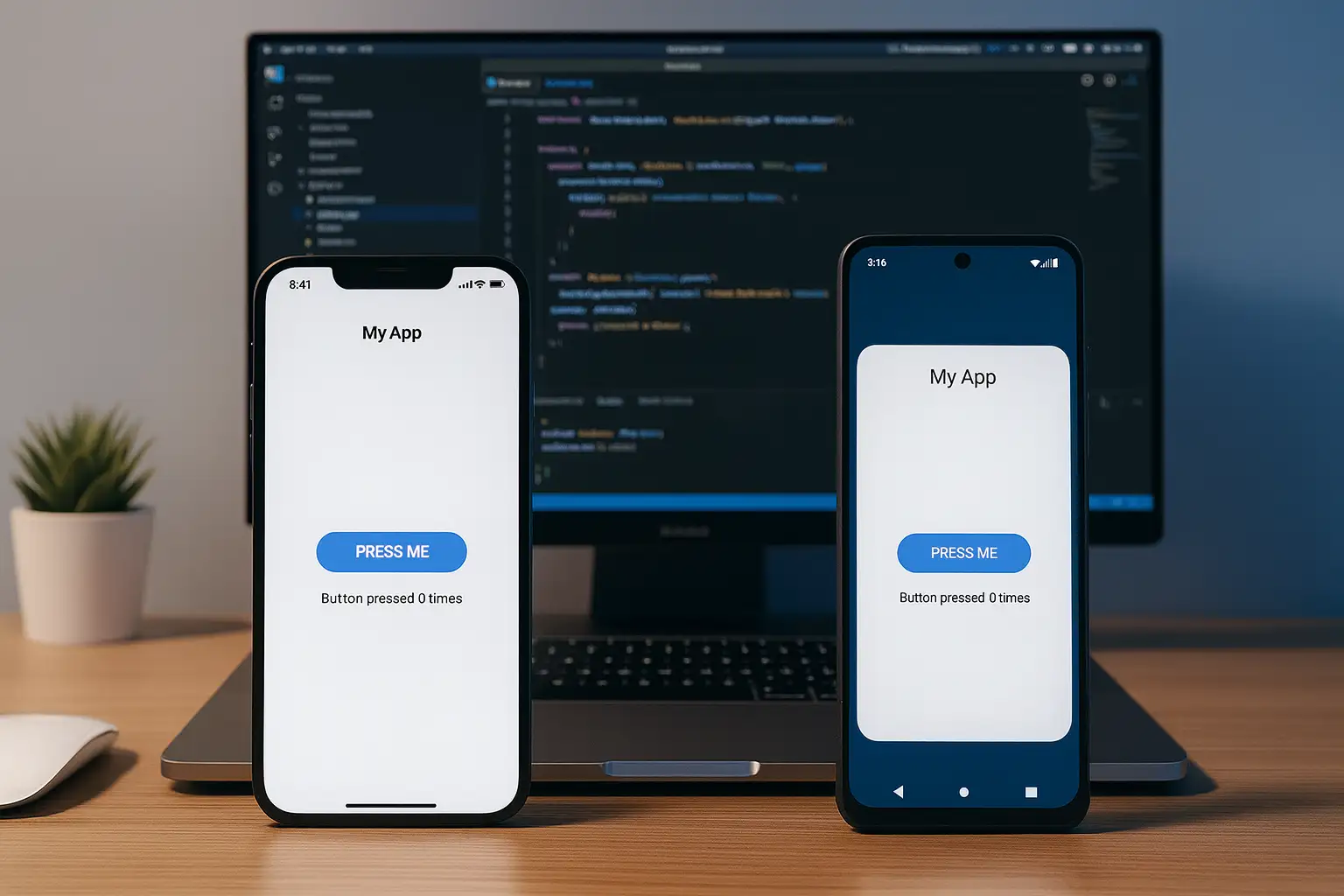
Xamarin (Microsoft’s Cross-Platform Solution)
Overview: Xamarin, owned by Microsoft, is a powerful cross-platform framework that allows developers to build native mobile apps using C# and the .NET ecosystem. By sharing code across iOS, Android, and even desktop, Xamarin is particularly appealing for enterprise solutions that rely on existing .NET infrastructure.
Strengths:
Leverages C# and the .NET ecosystem, making it familiar for Microsoft developers
Close-to-native performance, often compiled to native code for speed
Strong enterprise backing from Microsoft, ensuring long-term support and security
Code sharing across mobile, web, and desktop, reducing overall development effort
Weaknesses:
Smaller community compared to Flutter or React Native, which can limit third-party support
UI development can feel less intuitive for developers used to modern frameworks
Requires Visual Studio, which may increase setup requirements
Ideal Use Cases:
Enterprise mobile applications where stability and security are crucial
Apps requiring integration with existing .NET backends or Microsoft enterprise services
Complex business logic apps benefiting from shared codebases
Teams with C# expertise looking to expand into mobile app development
Key Features:
C# Language & .NET Libraries → Efficient for developers in the Microsoft ecosystem
Xamarin.Forms → For shared UI components across platforms
Xamarin.Native → For platform-specific UI when high customization is needed
Visual Studio Integration → Full IDE support for debugging, building, and testing
Native API Access → Leverage device-specific features without sacrificing performance
Why It Matters in 2025: For enterprise teams and C# developers, Xamarin remains one of the top tools for mobile app development, delivering cross-platform apps with near-native performance while reducing development costs through code sharing and Microsoft ecosystem support.
Looking to build enterprise-grade mobile apps that integrate seamlessly with your .NET systems? Collaborate with Logisol Technologies to leverage Xamarin, one of the top mobile app development tools 2025, and create secure, scalable apps for iOS and Android.
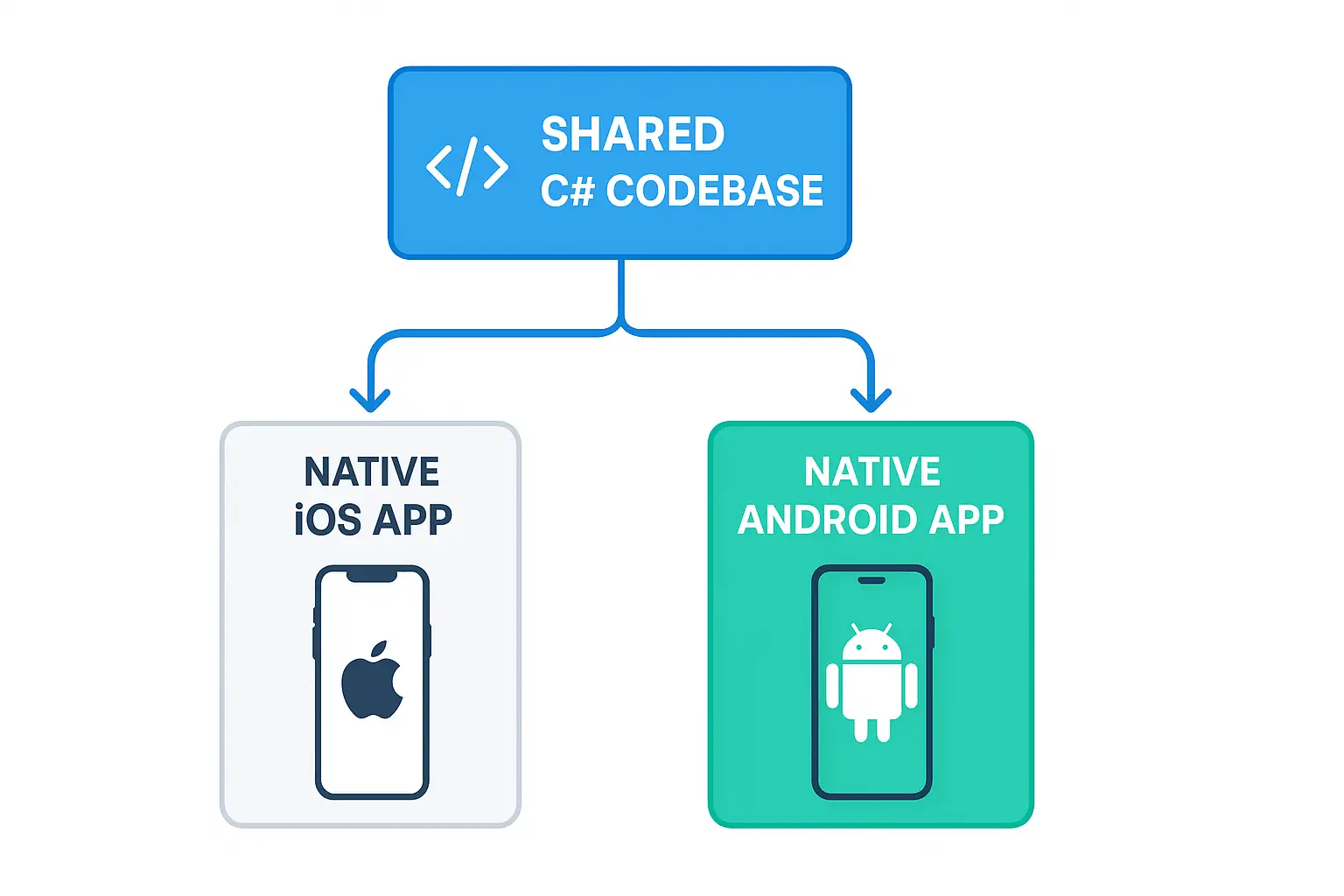
Leading No-Code/Low-Code Mobile App Development Platforms
In 2025, the rise of no-code and low-code tools has transformed mobile app development. Businesses and aspiring developers no longer need to rely solely on traditional coding to launch apps. These platforms empower non-developers, speed up development cycles, and cut costs dramatically, making them one of the top trends in mobile app development tools.
The Rise of No-Code/Low-Code
Why it matters:
Accessibility: Enables non-developers and business users to create apps without deep programming knowledge
Speed & Cost Efficiency: Launch apps faster and cheaper than traditional development
Rapid Prototyping: Test ideas and gather market feedback quickly before committing to full-scale builds
With these benefits, top no-code tools for mobile app development are now a strategic choice for startups, SMBs, and enterprises alike.
1. AppGyver / SAP Build Apps
Overview: AppGyver, now part of SAP Build Apps, is a professional-grade no-code platform for mobile and web apps. It uses drag-and-drop interfaces with robust logic and data integration options.
Strengths:
Robust logic and workflow capabilities for complex apps
Integrates seamlessly with multiple data sources
Enterprise-ready with SAP ecosystem compatibility
Builds professional apps without writing a single line of code
Weaknesses:
Steeper learning curve than ultra-simple no-code tools
Best suited for enterprise and data-driven apps
Ideal Use Cases:
Internal business tools and dashboards
Customer-facing apps requiring data integration
Prototypes and MVPs for enterprise projects
2. Bubble
Overview: Bubble is a visual programming platform for web and mobile web apps, which can also be wrapped into native apps. It’s a favorite for startups that need fast, flexible MVPs.
Strengths:
Extremely flexible visual builder with responsive layouts
Powerful database and workflow automation
Large community and plugin ecosystem
Weaknesses:
Not truly native mobile, relies on browser or wrappers
Performance can vary for complex apps
Ideal Use Cases:
MVPs and early-stage startups testing ideas quickly
Web-based marketplaces or social networks
Internal tools and responsive mobile apps
3. Other Notable Platforms (Quick Picks)
Adalo: Focused on simple, visually appealing mobile apps with minimal effort
Glide: Turns Google Sheets into functional mobile apps in minutes
Backendless: A low-code backend solution for powering mobile applications
Why No-Code/Low-Code Matters in 2025: These platforms bridge the gap between idea and launch, allowing businesses to innovate faster and validate market demand before investing in complex native or cross-platform development. Want to build and launch your mobile app faster, without heavy coding or high costs? Partner with Logisol Technologies to leverage top no-code tools for mobile app development and get your MVP or enterprise app to market in record time.
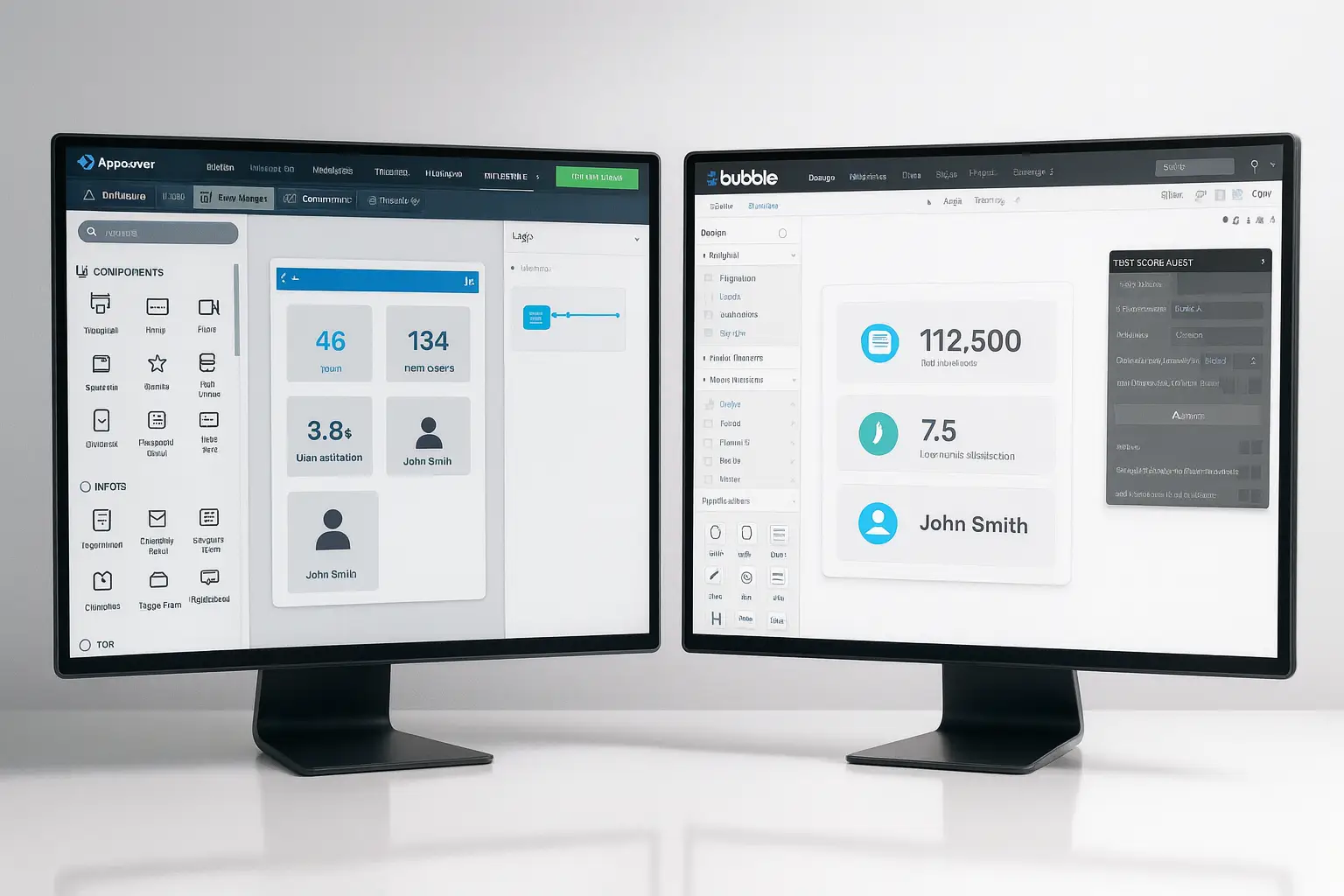
Essential AI Tools and Libraries for Mobile App Development
In 2025, artificial intelligence (AI) is no longer a futuristic buzzword—it’s a competitive advantage in mobile app development. By integrating AI tools and libraries, developers can create smart, personalized, and automated app experiences that boost engagement and retention.
The Power of AI in Mobile Apps
Why AI Matters:
Enhanced User Experience: Personalized recommendations, smart suggestions, and adaptive interfaces
Automation: Intelligent assistants and task automation reduce user effort
Advanced Capabilities: Unlock features like image recognition, natural language processing (NLP), predictive analytics, and real-time object detection
Practical AI integration is all about using the right tools and libraries to bring intelligence to mobile apps without reinventing the wheel.
1. TensorFlow Lite
Overview: TensorFlow Lite is Google’s lightweight machine learning library designed for on-device inference on mobile, edge, and IoT devices.
Strengths:
Optimized for mobile hardware, enabling fast AI predictions without cloud reliance
Supports a variety of ML models, from image recognition to NLP
On-device processing enhances privacy and offline capabilities
Weaknesses:
Requires pre-trained models; not ideal for complex on-device training
Steep learning curve for beginners
Ideal Use Cases:
Real-time image recognition and object detection
On-device NLP, like text classification or sentiment analysis
Personalized recommendations without constant cloud communication
2. ML Kit
Overview: ML Kit, part of Google’s Firebase ecosystem, provides ready-to-use machine learning APIs for both Android and iOS apps—making AI accessible and fast to integrate.
Strengths:
Pre-built APIs for common AI tasks: text recognition, barcode scanning, face detection
Supports on-device and cloud-based inference for flexibility
Excellent documentation and Firebase integration
Weaknesses:
Less flexible than TensorFlow Lite for highly custom models
Advanced AI customization may require additional ML frameworks
Ideal Use Cases:
Face detection and barcode scanning for retail, security, and utility apps
Text recognition and translation for document scanning and language apps
Smart replies or landmark recognition for travel and productivity tools
3. Cloud-Based AI Services (Brief Overview)
AWS Amplify / SageMaker: Seamlessly integrate custom ML models with scalable backends
Google Cloud AI Platform: Access pre-trained models and train custom models in the cloud
Azure Cognitive Services: Ready-to-use APIs for vision, speech, language, and decision AI
These services are perfect for data-heavy apps requiring cloud-powered intelligence and scalable backend processing.
Beyond the Hype: Practical AI for 2025
The real value of AI in mobile app development comes from leveraging pre-built libraries and APIs to:
Add intelligence quickly and cost-effectively
Improve UX with personalization and automation
Future-proof apps with features that today’s users expect
By focusing on actionable AI tools like TensorFlow Lite, ML Kit, and cloud AI services, developers and businesses can unlock next-gen experiences without heavy R&D costs.
Want to build AI-powered mobile apps that engage and retain users? Work with Logisol Technologies to integrate top AI tools for mobile app development 2025—from TensorFlow Lite to ML Kit and cloud AI services—and create intelligent, future-ready mobile apps.
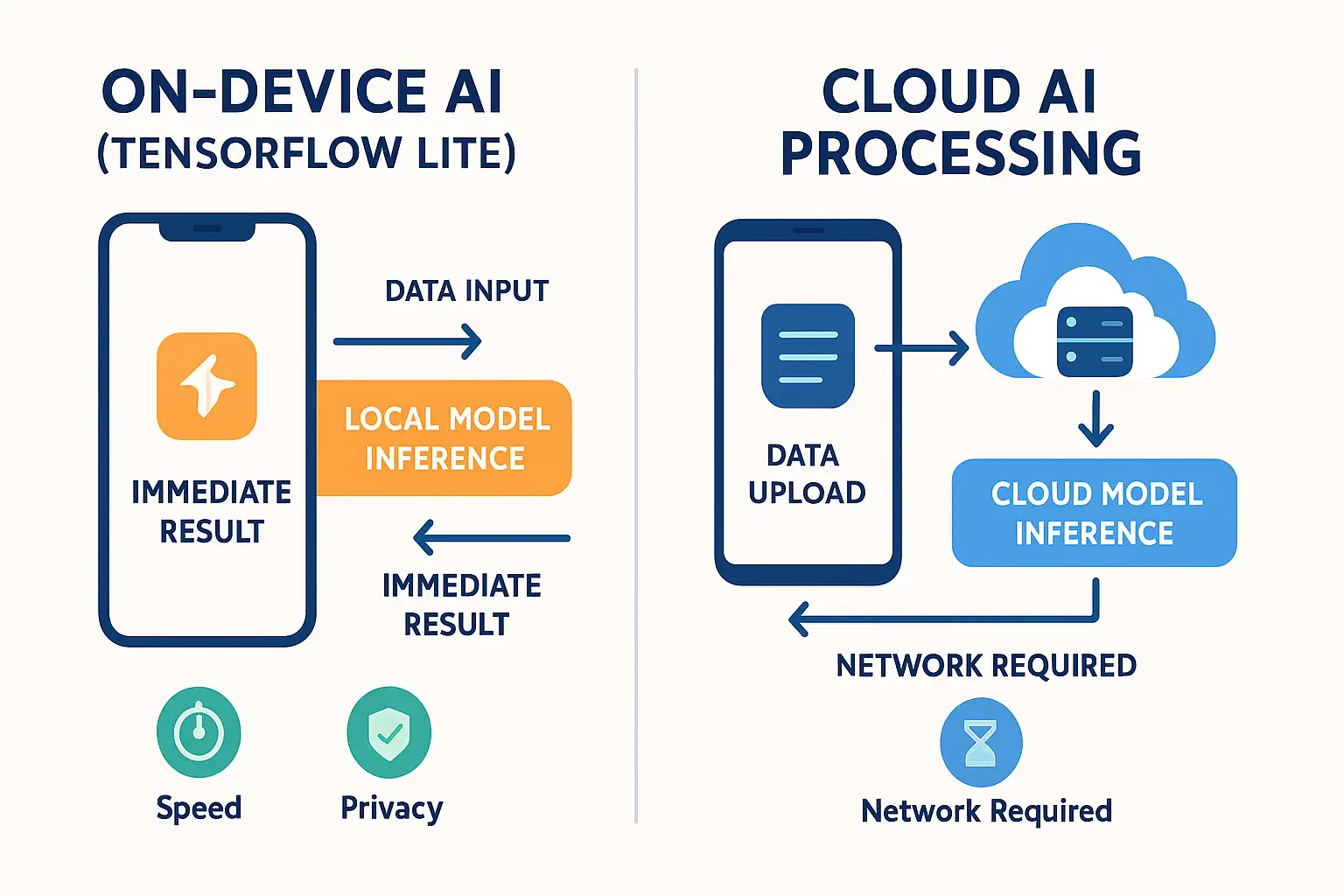
Comprehensive Comparison Table of Top Mobile App Development Tools 2025
Tool / Framework | Type (Native / Cross / No-Code) | Primary Language | Pros | Cons | Best Use Case | Learning Curve | AI Integration Capabilities |
|---|---|---|---|---|---|---|---|
Swift / Xcode | Native (iOS) | Swift | Optimal performance, full iOS access, strong Apple ecosystem | iOS-only, macOS required, steeper learning curve | High-performance apps, AR/VR, highly customized UI/UX | High | Via Core ML, Vision, Natural Language frameworks |
Kotlin / Android Studio | Native (Android) | Kotlin | Optimal performance, deep Android access, official Google support | Android-only, longer dev cycle for dual-OS | Complex enterprise apps, deep hardware integration, Android-specific features | High | Via ML Kit, TensorFlow Lite, custom ML models |
Flutter | Cross-Platform | Dart | Excellent performance, fast dev with hot reload, beautiful UI widgets | Dart language learning curve, larger app size, some niche libs still maturing | Visually rich apps, MVPs, projects needing consistent cross-platform UI | Medium | Via TensorFlow Lite, ML Kit, platform channels |
React Native | Cross-Platform | JavaScript | Web-dev friendly, huge community, hot reloading | Performance can lag for complex animations, JavaScript bridge overhead | Social media, e-commerce, dynamic content apps, teams with web dev expertise | Medium | Via ML Kit, TensorFlow Lite, JS libraries |
Xamarin | Cross-Platform | C# | Leverages C#/.NET, close to native performance, Microsoft enterprise support | Smaller community, UI development less intuitive | Enterprise apps, .NET backend integration, complex business logic | Medium | Via ML.NET, Azure Cognitive Services, TensorFlow Lite |
AppGyver / SAP Build Apps | No-Code / Low-Code | Visual | Rapid dev, robust logic, enterprise focus, strong data integrations | Steeper no-code curve, less customizable than fully coded solutions | Business apps, internal tools, customer-facing data apps, prototypes | Medium | Via cloud-based AI service integrations |
Bubble | No-Code / Low-Code (Web App) | Visual | Extreme flexibility, powerful workflows & DB, large community | Not truly native, performance can vary | MVPs, web-based apps with mobile responsiveness, marketplaces | Medium | Via API integrations with AI services |
TensorFlow Lite | AI Integration Library | N/A | Optimized for on-device ML inference, efficient | Requires pre-trained models, complex for beginners | Real-time image recognition, object detection, on-device NLP | High | Core AI library (mobile model deployment) |
ML Kit | AI Integration Library | N/A | Easy-to-use APIs for ML tasks, on-device & cloud options | Less flexible than TensorFlow Lite for custom models | Face detection, barcode scanning, text recognition, smart replies | Medium | High-level AI library (simplified mobile ML) |
Why This Table Matters: This side-by-side comparison gives developers, startups, and SMBs an at-a-glance decision guide. Whether you want native speed, cross-platform flexibility, rapid no-code prototyping, or AI-powered intelligence, this table helps you pick the top mobile app development tools 2025 that match your goals, budget, and team skills.
Still unsure which tool is right for your project? Book a Strategy Session with Logisol Technologies to evaluate your project requirements and select the best mobile app development tools for performance, cost-efficiency, and long-term scalability.
How to Choose the Right Tool for Your Project: A Step-by-Step Guide
Selecting the top mobile app development tools 2025 isn’t just about popularity—it’s about aligning your tools with your goals, team, and future growth. Use this step-by-step guide to eliminate guesswork and make a confident, ROI-driven decision.
Step 1: Define Your App’s Core Purpose & Goals
Ask yourself:
What problem does your app solve?
Who is your target audience?
What are the must-have features?
Is it performance-critical (gaming, AR/VR) or content-driven (news, social)?
Expert Tip: Clearly defining purpose, features, and performance needs ensures you pick a tool that fits, rather than forcing your app into the wrong framework.
Step 2: Assess Your Budget & Timeline
Budget: Can you afford two native codebases, or is a single codebase essential?
Timeline: Need a fast MVP launch, or can you afford longer development for higher performance?
ROI Insight:
Native apps → Higher cost, superior performance
Cross-platform → Moderate cost, faster delivery
No-code/low-code → Lowest cost, fastest MVP launch
Step 3: Evaluate Your Team’s Skill Set & Resources
Do you have Swift/Kotlin experts for native?
Are you strong in JavaScript or C# for cross-platform tools like React Native or Xamarin?
No coding skills? → Start with no-code platforms like AppGyver or Bubble.
If in-house skills are limited, partnering with Logisol Technologies ensures expert execution without delays.
Step 4: Determine Target Platforms (iOS, Android, or Both)
Single platform (iOS or Android): Choose native for maximum control and performance.
Dual-platform: Opt for cross-platform or no-code to reduce cost and time-to-market.
Step 5: Consider Future Scalability & Maintenance
Will your app grow with more users, features, or data?
Does the tool have a strong community, frequent updates, and third-party plugin support?
E-E-A-T Tip: Choose tools that are actively maintained to ensure security, compatibility, and long-term viability.
Step 6: Plan for AI and Advanced Integrations
Do you need machine learning, AR/VR, IoT, or predictive analytics?
Does the tool easily integrate AI libraries like TensorFlow Lite, ML Kit, or cloud-based AI services?
Practical Insight: Use pre-built AI tools to speed up development and reduce cost, instead of building complex models from scratch.
Quick Decision Tree for Choosing Your Tool
Is performance critical?
Yes → Native (Swift / Kotlin)
No → Cross-platform or No-code
Need MVP fast?
Yes → Flutter or No-code platforms
Have web development experience?
Yes → React Native
Building enterprise apps with .NET?
Yes → Xamarin
Non-developer launching first app?
Yes → No-code / Low-code platforms
Future Trends in Mobile App Development Tools (Beyond 2025)
Stay ahead by anticipating where mobile development is going:
Continued Convergence of AI & Mobile
On-device AI for personalization and speed
AI-assisted coding & automated testing
Generative AI for UI design and content
Rise of Spatial Computing & AR/VR Integration
Tools adapting for Apple Vision Pro and Meta Quest
Immersive 3D and XR experiences in everyday apps
Decentralized App (dApp) Development & Web3
Blockchain-based authentication and data storage
Web3 mobile frameworks for secure, decentralized apps
Hyper-Personalization & Contextual Awareness
Privacy-preserving AI that leverages sensors & data
Context-aware apps that anticipate user needs
Low-Code/No-Code Evolution
More complex app capabilities with less code
Hybrid workflows: prototype in no-code, scale with code
Sustainable Development Practices
Focus on energy-efficient apps and eco-friendly frameworks
Reducing carbon footprint of app usage
Ready to choose the perfect tool and launch your next mobile app? Partner with Logisol Technologies to select the best mobile app development tools 2025, integrate AI and emerging tech, and turn your vision into a market-ready success.
Conclusion: Building Mobile Apps with the Right Tools for 2025 and Beyond
Choosing the right mobile app development tool is more than a technical decision—it’s a strategic investment in your app’s success.
In this guide, we’ve explored:
Native tools (Swift/Xcode, Kotlin/Android Studio) for maximum performance and control
Cross-platform frameworks (Flutter, React Native, Xamarin) for speed and cost-efficiency
No-code/low-code solutions (AppGyver, Bubble) for rapid MVPs and accessible app creation
AI-powered tools (TensorFlow Lite, ML Kit) to enhance intelligence and personalization
The right tool aligns with your performance needs, budget, team skills, and long-term scalability—ultimately shaping user experience and business outcomes.
Final Strategic Advice for Mobile App Success
Start small and iterate: Begin with a focused MVP and scale with confidence
Prioritize user experience: Performance and usability always win loyalty
Stay adaptive and informed: Continuously track emerging trends like AI, AR/VR, and Web3 to keep your app future-ready
Commitment: At Logisol Technologies, we stay ahead of industry shifts. This guide to top mobile app development tools 2025 will be regularly updated to ensure you always have the latest insights and best practices.
Your app idea deserves the perfect tool and the perfect team. Partner with Logisol Technologies to:
Select the best mobile app development tools for your project
Accelerate time-to-market with expert guidance
Integrate AI and future-ready features that keep you ahead of the competition
And once your app is live, promote it effectively using social media. Check out our guide on Best Instagram Management Services & Tools to boost your app’s visibility and engagement.
Let’s turn your mobile app vision into a high-performing, market-ready success today.
Frequently Asked Questions About Mobile App Development Tools 2025
1. What are the top mobile app development tools in 2025?
The top mobile app development tools in 2025 include:
Native: Swift/Xcode (iOS), Kotlin/Android Studio (Android)
Cross-platform: Flutter, React Native, Xamarin
No-code/Low-code: AppGyver (SAP Build Apps), Bubble, Adalo
AI-powered tools: TensorFlow Lite, ML Kit
These tools help developers and businesses build apps faster, integrate AI features, and scale across iOS and Android efficiently.
2. Which is better: native or cross-platform app development?
Native apps offer maximum performance, smooth animations, and deeper hardware access, making them ideal for gaming, AR/VR, or high-performance apps. Cross-platform frameworks like Flutter or React Native allow faster, cost-effective development with a single codebase for iOS and Android.
Choose native for performance-critical apps; choose cross-platform for faster MVPs or lower budgets.
3. What is the best no-code mobile app development platform?
The best no-code platforms for mobile apps in 2025 are:
AppGyver / SAP Build Apps → For enterprise and data-driven apps
Bubble → For MVPs, marketplaces, and web-based mobile apps
Adalo or Glide → For simple, visually appealing mobile apps
These tools reduce development time and cost, allowing non-developers to launch apps quickly.
4. How do I choose the right mobile app development tool for my project?
Follow this step-by-step approach:
Define your app’s core purpose and must-have features
Assess budget and timeline (MVP speed vs. performance priority)
Match tools to your team’s skills (Swift/Kotlin, JavaScript, C#, or no-code)
Decide target platforms (iOS, Android, or both)
Consider future scalability and AI integration needs
5. Which mobile app development tools support AI integration?
Top tools for AI-powered mobile apps include:
TensorFlow Lite → On-device ML for image recognition and NLP
ML Kit → Ready-to-use AI APIs for face detection, barcode scanning, and text recognition
Cloud AI Services → Google Cloud AI, AWS SageMaker, and Azure Cognitive Services
Cross-platform frameworks like Flutter and React Native can integrate these AI libraries and services easily.
6. What are the advantages of using Flutter for mobile app development?
Flutter, Google’s cross-platform toolkit, offers:
Single codebase for iOS, Android, web, and desktop
Hot reload for rapid development and testing
Beautiful, customizable UIs with Material Design and Cupertino widgets
High performance through native compilation
Flutter is ideal for startups, MVPs, and visually rich apps requiring consistent design across platforms.
7. What trends will shape mobile app development tools after 2025?
Key future trends include:
AI-powered development → Automated coding, testing, and personalization
AR/VR and spatial computing → Apps for Apple Vision Pro, Meta Quest, and 3D experiences
Web3 and decentralized apps (dApps) → Secure, blockchain-based mobile apps
Low-code/no-code evolution → More complex, hybrid apps built faster
Sustainability focus → Tools promoting energy-efficient and eco-friendly apps
Logisol
Technologies
Founded in 2024, Logisol is a trusted tech company delivering innovative digital solutions and cutting-edge web development services.
Read MoreMobile App Development